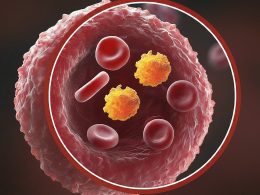Title: From Sci-Fi to Reality: Ultrasound May Hold the Key to Cryogenic Sleep
Introduction: The realm of science fiction has often explored the idea of cryogenic sleep, a state of suspended animation where individuals can be preserved for long periods of time. Now, recent scientific advancements in the field of ultrasound technology are bringing us closer to turning this concept into reality. Researchers have discovered that ultrasound waves can induce a hibernation-like state in animals, raising the possibility of using ultrasound to achieve cryogenic sleep in humans. In this article, we explore the exciting potential of ultrasound in unlocking the doors to cryogenic sleep.
Ultrasound’s Impact on Hibernation: Ultrasound technology, traditionally known for its medical imaging applications, has emerged as a powerful tool for manipulating physiological processes. Studies have shown that carefully controlled ultrasound pulses can influence brain regions responsible for regulating metabolism and body temperature. By stimulating these areas, researchers have successfully induced hibernation-like states in animals, opening up new possibilities for human applications.
Cryogenic Sleep: Science or Fiction? The concept of cryogenic sleep has long fascinated both scientists and science fiction enthusiasts. The idea of preserving the human body in a state of suspended animation, allowing for extended periods of travel or hibernation, has been a popular trope in books and movies. While still in the realm of science fiction, recent research suggests that ultrasound technology may hold the key to transforming this concept into a tangible reality.
The Potential of Ultrasound-Induced Cryogenic Sleep: Ultrasound-induced cryogenic sleep has the potential to revolutionize various fields. Here are some of the areas where this breakthrough technique could have significant implications:
- Long-Distance Space Travel: One of the most exciting possibilities of cryogenic sleep is its potential application in long-duration space missions. By inducing a hibernation-like state in astronauts, the need for life support systems, food, and water could be greatly reduced. This could enable interstellar travel, allowing humans to explore distant worlds beyond our solar system.
- Medical Advancements: Cryogenic sleep could have transformative applications in the field of medicine. By placing patients in a state of suspended animation during complex surgeries or treatments, the body’s metabolic demands could be minimized, reducing the risk of complications and improving recovery outcomes. Additionally, cryogenic sleep may provide a means to preserve organs for transplantation, extending their viability and increasing the chances of successful transplants.
- Space Colonization: Ultrasound-induced cryogenic sleep could play a crucial role in future space colonization efforts. By enabling humans to enter long periods of suspended animation, the challenges of extended space travel and establishing colonies on other planets could be overcome. This could potentially revolutionize our ability to explore and inhabit distant celestial bodies.
Overcoming Challenges and Ethical Considerations: While the concept of cryogenic sleep through ultrasound holds great promise, there are significant challenges and ethical considerations to address. Extensive research is needed to understand the long-term effects, risks, and optimal protocols for inducing cryogenic sleep in humans. Ethical guidelines must also be established to ensure the well-being and safety of individuals in this state of suspended animation.
The Future of Cryogenic Sleep: Ultrasound-induced cryogenic sleep brings us one step closer to turning science fiction into reality. The potential applications in space travel, medicine, and beyond are awe-inspiring. However, it is essential to approach this breakthrough technology with caution, conducting rigorous research and upholding ethical principles. As scientists continue to unravel the intricacies of ultrasound-induced cryogenic sleep, we may witness a future where the boundaries between fiction and reality become increasingly blurred.
Conclusion: Ultrasound technology has opened up a realm of possibilities, with cryogenic sleep being one of the most intriguing applications. From enabling long-distance space travel to transforming medical procedures, the potential of ultrasound-induced cryogenic sleep is immense. While we are still on the path to fully understanding and realizing this concept, the progress made so far underscores the remarkable advancements in scientific research. As we explore the frontiers of ultrasound and its impact on hibernation, the day may come when cryogenic sleep becomes an everyday reality rather than a mere fantasy.










